Engine grease stains are some of the toughest stains to remove. Two reasons stand out. The first is the amount of engine grease the clothes soak up before you get around to washing them (most likely by the end of the day). And the second is the various types of grease and oil that you have to deal with.
You can remove engine grease stains from clothes with baking soda, baby powder, mechanic soap, cornstarch, or dish soap. Each type of grease and oil stain requires a different treatment. But the sooner you treat the grease stain before it sets, the better the results.
Read more to find out the different types of engine grease and oil stains your clothes are exposed to and how to remove them using 6 different methods. You’ll also learn about removing engine grease stains from delicates.
Types Of Engine Grease And Oil Stains
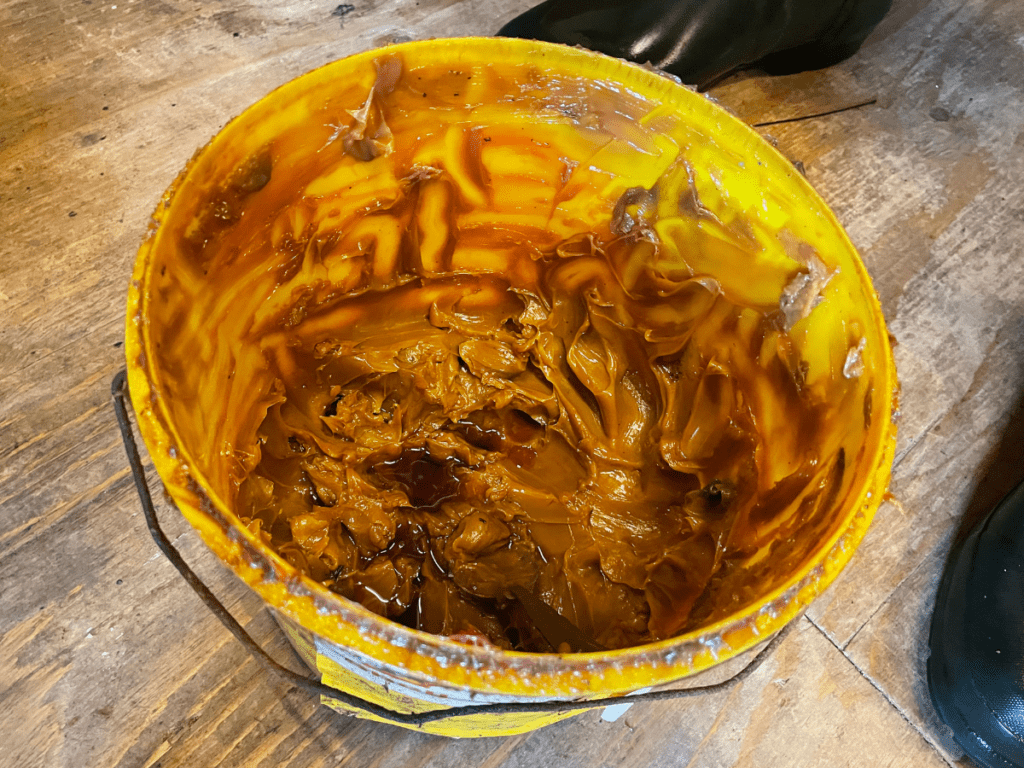
Grease comes in different types and viscosity. If you work in an auto workshop, chances are your work clothes get soaked with different oils and grease stains by the end of the day. Oil is less viscous than grease, which means that the clothes will absorb it much faster.
But grease repels moisture much more effectively than oil which means that you’ll need to treat it with powders rather than liquid cleaners. To get the stain out of the clothes, you’ll need to identify it successfully and then determine the best way to treat it.
Here are the common types of grease and oil you’re exposed to when working on a vehicle.
- Car Grease: This grease is thick and is used to lubricate the internal parts of the car, such as the chassis, wheel bearing, and moving engine parts.
- Motor Oil: This oil is used to lubricate the combustion engine. It has an oil base along with some additives like anti-wear and dispersants that make these stains rather difficult to remove.
- Axle Grease: This is a more specific type of grease just for lubricating the wheel bearing. It’s made of petroleum-based grease, which makes it waterproof. You’ll need a powder cleaner to remove these stains.
- Mechanical Grease: This type of grease is made of oil with an added thickener like soap to make it more viscous and prevent its disintegration. You can treat it as an oil stain rather than a grease stain.
- Industrial Grease: Another type of grease made of a liquid lubricant and a thickener. It goes back to liquid form at high temperatures above 200 degrees F.
6 Ways to Remove Engine Grease Stains from Clothes
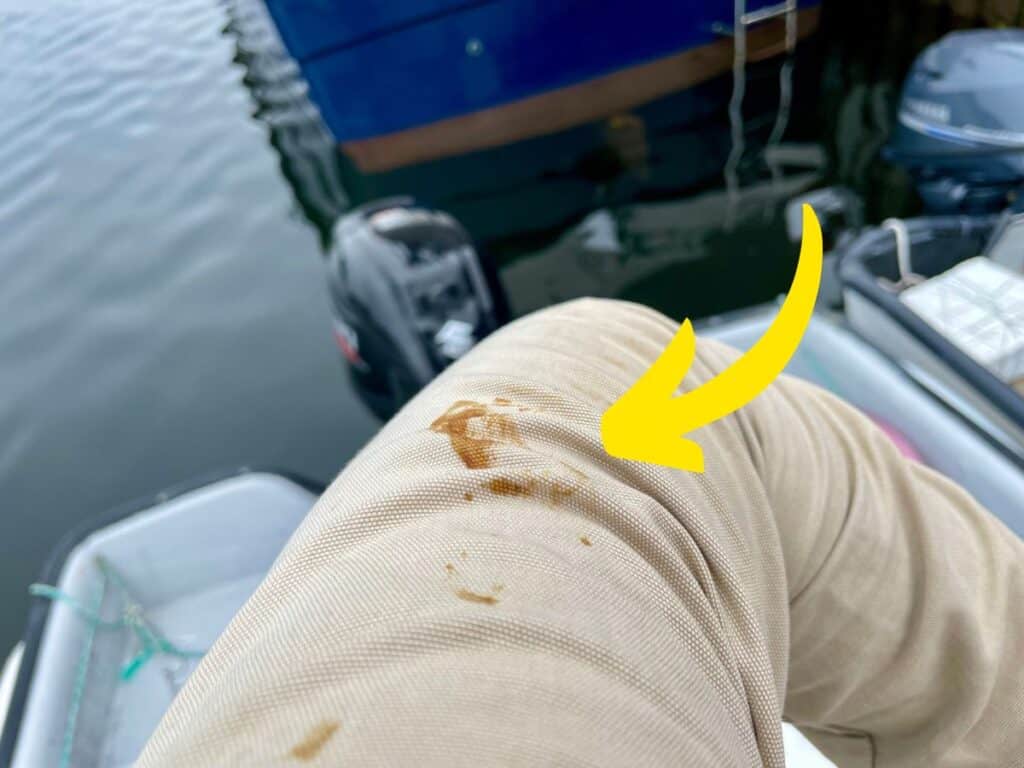
After identifying which type of stain you’re dealing with, you can choose either a liquid or a dry cleaning method to treat it. As we saw in the previous section, some grease stains are actually oil-based, with soap mixed in to make the material thicker. So you’ll need to treat them as oil stains.
Ideally, you’d treat the engine grease stains with powders like cornstarch, baking soda, or baby powder since the grease is water-repellent. Oil stains can be treated with aloe vera gel or dish soap. But since many engine grease and oil stains are hard to tell apart, you can try different methods on the same stain.
1. Dish Soap
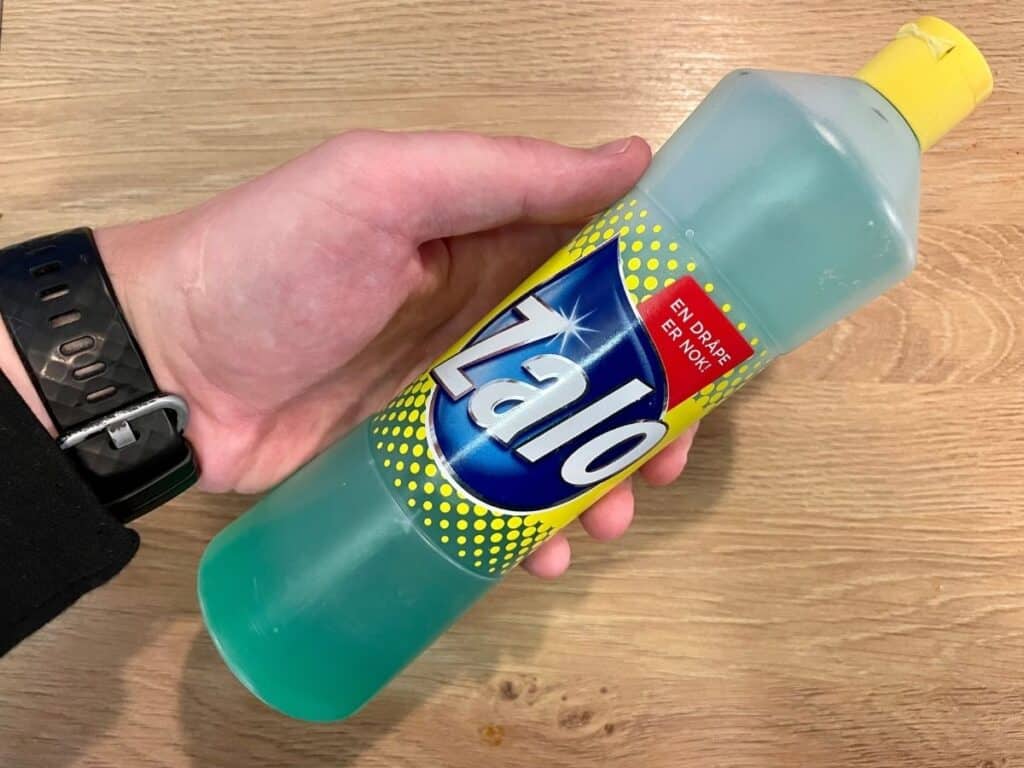
This is the most affordable and readily-available cleaner around the house. It can be quite effective against motor oil and filter oil stains. You might even use it with varying degrees of success on industrial grease stains and mechanical grease stains since they’re both oil-based.
Dish soap is quite effective against engine grease and oil stains as long as the stains are fresh and not set.
Materials
- Cardboard or an old towel.
- Paper towels
- Dish soap.
- Washcloth or a sponge.
How To Clean
- Spread the cardboard or old towel on a table.
- Lay the stained garment flat on top of the cardboard.
- Place the paper towel above the stain and press it in to absorb the excess oil or grease. Repeat with a fresh towel blotting the stain instead of rubbing it.
- Pour the dish soap over the stain directly and work it into the fabric with your fingers, or you can use the washcloth to rub the liquid in.
- Leave it for 5 minutes as the dish soap breaks down the oil stain.
- Apply a clean sponge or washcloth to the stain to absorb the dish soap and the stain.
- Repeat steps 4 to 6 until the stain is gone.
- Wash the clothes on a heavy-duty cycle with maximum water temperature and use a heavy-duty detergent.
2. Baking Soda
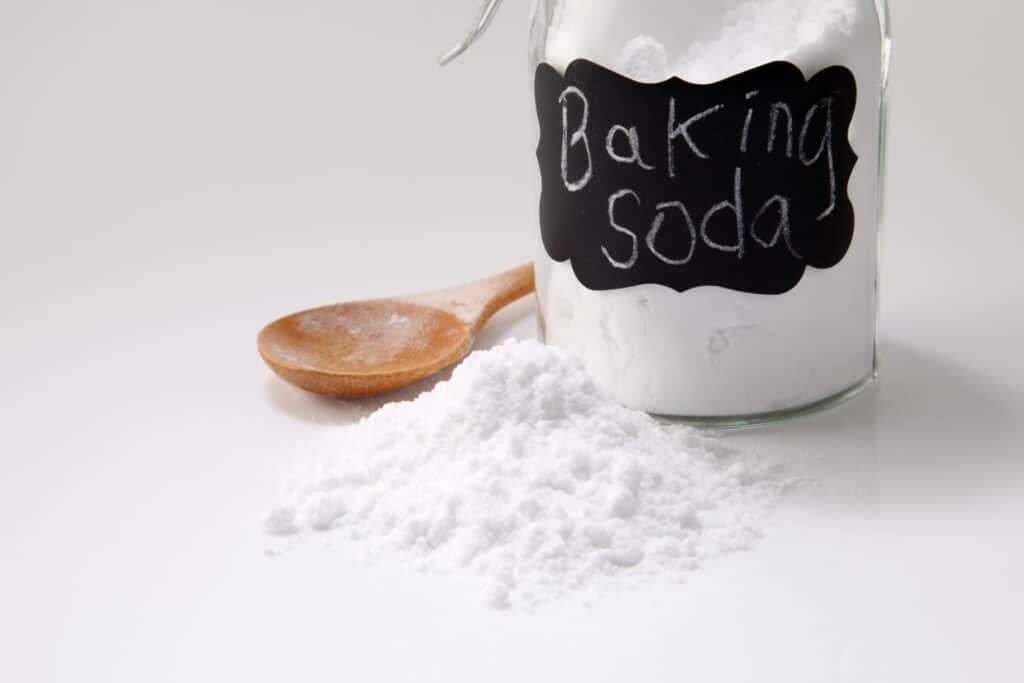
Baking soda is one of the most effective cleaners that you can use against different types of stains. Baking soda with vinegar combos can treat even set and hardened stains. But as far as engine grease and oil stains, all you need is just baking soda.
Since it comes in powder form, baking soda is effective against oil stains and oil-based grease stains. The powder absorbs the oil to make a paste that penetrates the fabrics to break the set stains. Then it’s just a matter of blotting the baking soda, which comes off along with the oil particles.
Materials
- Baking soda
- Cardboard or an old towel
- Coarse brush or a butter knife.
- Paper towels
- Sponge
- Hot water
How to Clean
- Place the cardboard or old towel on a table to protect the surface against the oil stains.
- Spread the stained garment on the cardboard so that the cardboard is between the stain and the table.
- Sprinkle a thick layer of baking soda over the stain that covers it totally.
- Wait for 10 minutes, then examine the powder. If the baking soda hasn’t changed into the color of the stain, give it another 10 minutes to soak up the stain.
- Use the back of the butter knife to scrape off the excess baking powder. It will come off with the oil particles in the stain.
- Examine the stain and repeat steps 3 to 5 as necessary.
- Put the clothes in the washer and set it to heavy-duty with the highest water temperature available.
3. Aloe Vera Gel
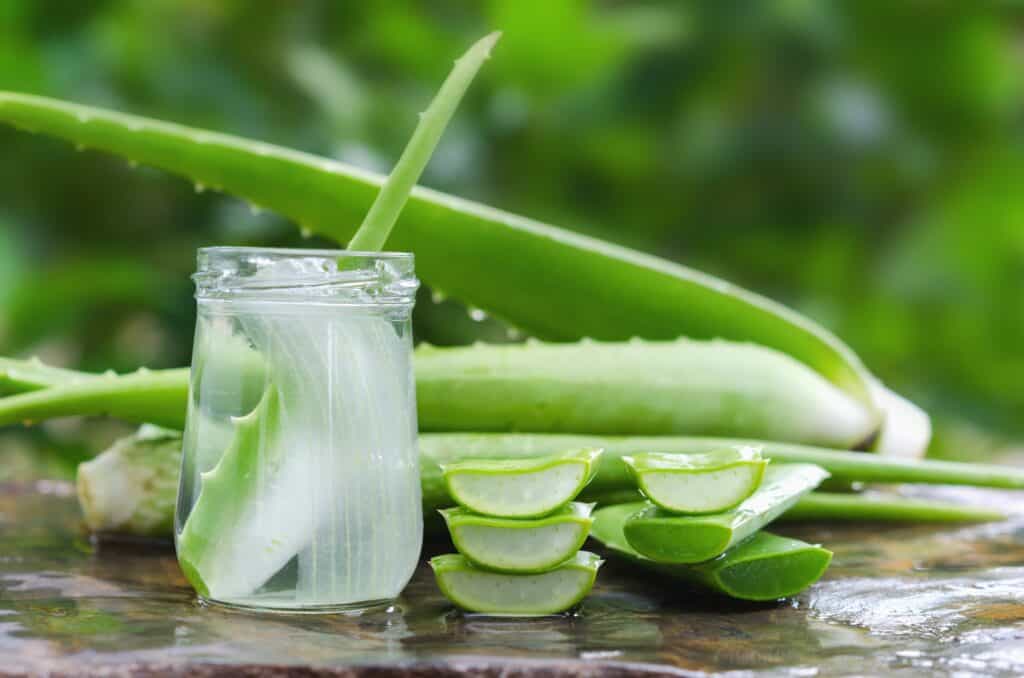
Aloe vera gel is often used for treating sunburns and blisters on the skin. But it’s also quite effective in removing oil and grease stains on clothes.
Materials
- Aloe vera gel
- Paper towels
- Hot water
- Sponge
- Large bucket
How to Clean
- Spread the stained garment on a table with the stain facing up.
- Apply paper towels to the stain to blot it. Use gentle pressure and don’t rub the stain.
- Fill the bucket with hot water to about two-thirds full.
- Drop the stained garment in the bucket and leave it for a half hour.
- Take the stained garment out and squeeze excess water out.
- Spread it on the table and apply aloe vera gel.
- Rub the gel in with your finger and give it 10 minutes.
- Blot the excess gel with a sponge.
- Wash the garment in high-temperature water.
- Dry it in the sun.
4. Baby Powder
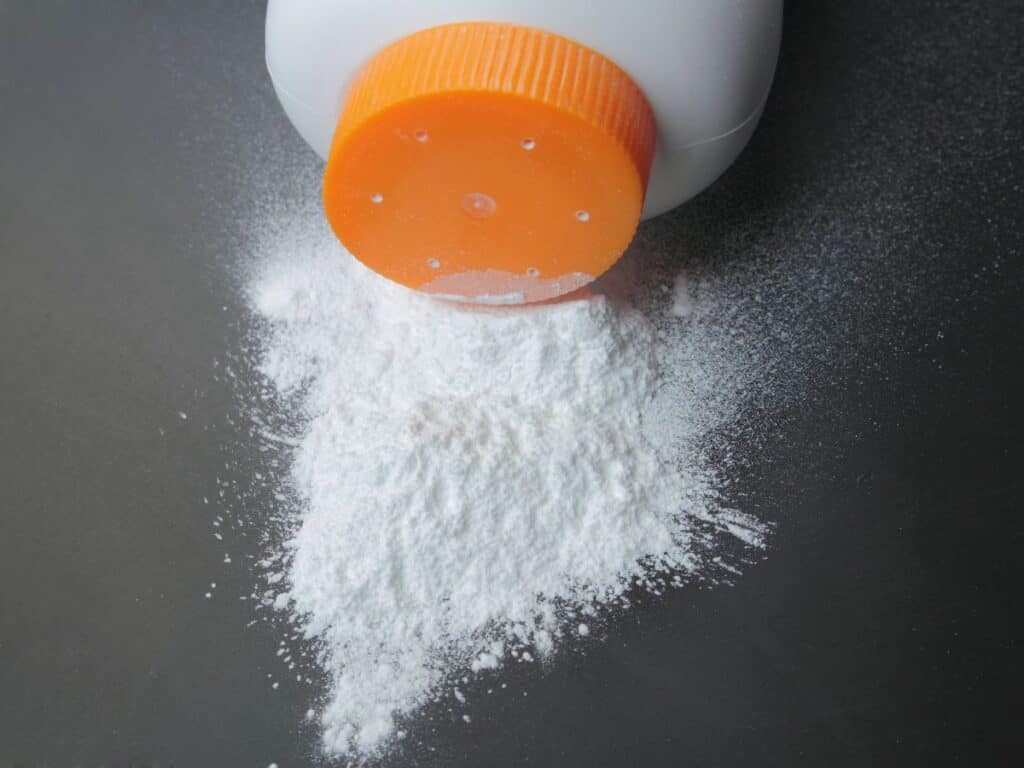
You can use baby powder on engine grease and oil stains in the same way you used baking soda. What gives baby powder an edge is that it absorbs oil and grease stains much faster and more efficiently than baking soda. That makes scraping off the stain a lot easier.
Materials
- Baby powder
- A toothbrush or a coarse brush.
- Cardboard
How to Clean
- Place the stained garment on top of the cardboard.
- Sprinkle the baby powder on the oil stain to cover it with a thick layer.
- Wait for 10 minutes and check on the stain. If the baby powder is still dry, allow it more time until it changes color.
- Use the toothbrush to scrub the stain and the baby powder.
- Examine the stain and repeat steps 3 and 4 until it’s gone.
- Wash the garment in cold water and then set the washer to a regular cycle.
5. Cornstarch
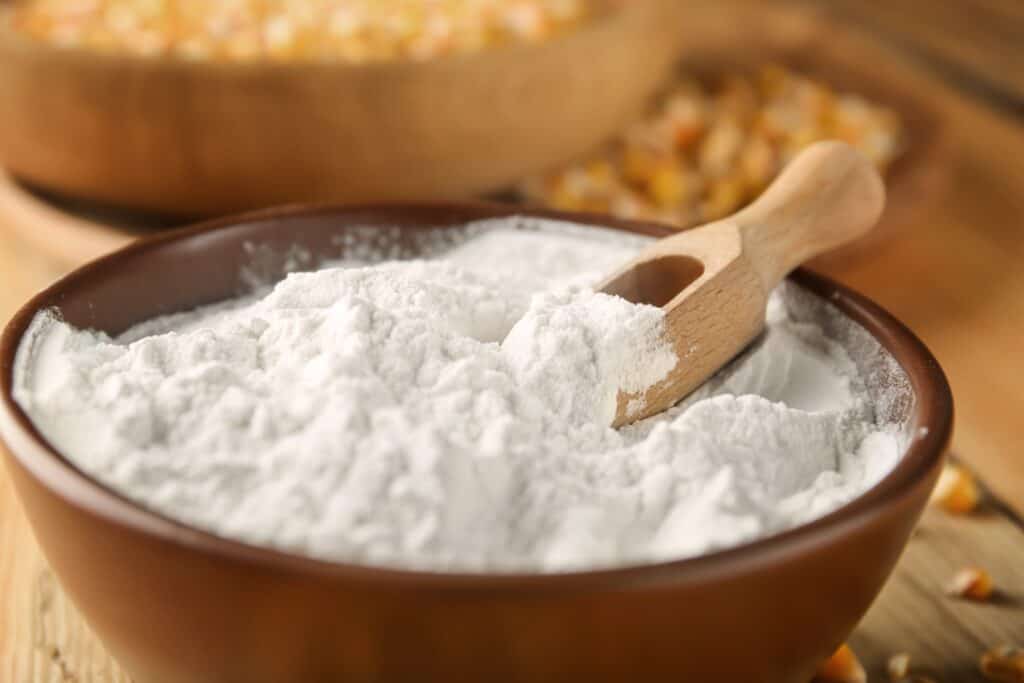
If you neither have baking soda nor baby powder, then cornstarch will get the job done. It’s also powder, so it absorbs oil and oil-based grease stains quite efficiently. However, cornstarch has mixed results, so you might want to use it along with dish soap or aloe vera gel.
Materials
- Cornstarch
- Toothbrush
- Washcloth or sponge
- Cardboard
- Paper towel
How to Clean
- Stretch the stained garment over the cardboard.
- If you’re dealing with a grease stain, use a paper towel to blot the excess grease.
- Sprinkle the cornstarch over the stain liberally to cover it with a thick layer.
- Allow the cornstarch up to an hour.
- Once the cornstarch has changed color, scrub the stain with the toothbrush.
- Repeat steps 3 to 5 until the stain is gone.
- If you still have an oil stain, try treating it with aloe vera gel.
- Wash in cold water and dry out in the sun.
6. Mechanics Soap

Mechanics soap is a powerful soap that mechanics use to clean stains on their skin. But just as with skin stains, mechanics soap is also effective against grease and oil stains on clothes.
Materials
- Mechanics soap (Amazon paid link)
- A toothbrush or a coarse brush
- Paper towel
- Sponge
- Cardboard
How to Clean
- Place the cardboard over the table and spread the garment over it
- Blot as much excess oil and grease as you can with the paper towel.
- Apply the mechanics’ soap to the stain covering the edges.
- Wait for 15 minutes as the soap breaks down the grease stain.
- Scrub the stain with the toothbrush and examine the stain.
- If the stain remains, repeat steps 3 to 5.
- Wash the mechanics’ soap off the stain and put the garment to wash in hot water.
- Dry outdoors under the sun.
How to Remove Engine Grease Stains From Delicate Clothes
It’s one thing to remove stains from work clothes designed specifically to handle engine grease stains, and it’s a whole different matter to remove said stains from delicate or expensive clothes and fabrics.
If you’re driving between states and your car breaks down, you’ll have to fix it quickly no matter what clothes you’re wearing. When you get home, that’s when you deal with the grease stains on the silk, satin, nylon, or other delicate fabrics.
Materials
- Baby powder or baking soda
- Sponge
- Cardboard
- Paper towel
- Aerosol stain remover
- Hand soap
- Sink or large pot
- Warm water
How to Clean
- Spread the delicate fabric on cardboard with the stain up.
- Sprinkle the baby powder or baking soda over the stain.
- Allow the powder between 10 to 15 minutes to absorb the grease or oil stain.
- Wipe the excess powder off with the sponge.
- Make sure the aerosol stain remover is safe for this fabric and spray it all over the stain. Cover the edges of the stain thoroughly.
- After 5 to 10 minutes, blot the stain remover with the paper towel.
- Fill a sink or a large pot with warm water and add 3 teaspoons of dish soap per 1 gallon of water. Mix well.
- Soak the garment in the water for 20 minutes. Read the instructions on the garment for soaking requirements.
- Rinse the garment with clean water and squeeze it gently.
- Place it on a towel and spread another towel over it. Press gently to absorb the excess water.
- Place the garment on another fresh towel and let it dry.
Tips for Removing Engine Grease Stains from Clothes
- Before you use any of these methods to clean grease and oil stains on clothes, read the label on the garment first.
- I recommend sending expensive fabrics such as silk and natural wool to a professional cleaner.
- Different stain removers apply to different fabrics and stains. Choose the right stain remover for the type of stain and fabric you’re dealing with.
- Break set in oil and grease stains with WD-40 before treating the stain with any of the above methods.
Conclusion
Grease and oil stains are not easy to remove, but they’re not permanent either. With the right stain remover and following the above steps, you can remove any engine grease stain.
I also wrote a guide on removing hydraulic oil stains that may interest you to read next.

I’m an expert wardrobe organizer and a bit of a clean freak. I created this website and its YouTube channel to share practical guides about laundry and organizing. My teachings have been featured in multiple large news publications, and I’ve self-published two wardrobe organizing books and an entire course on the subject.
